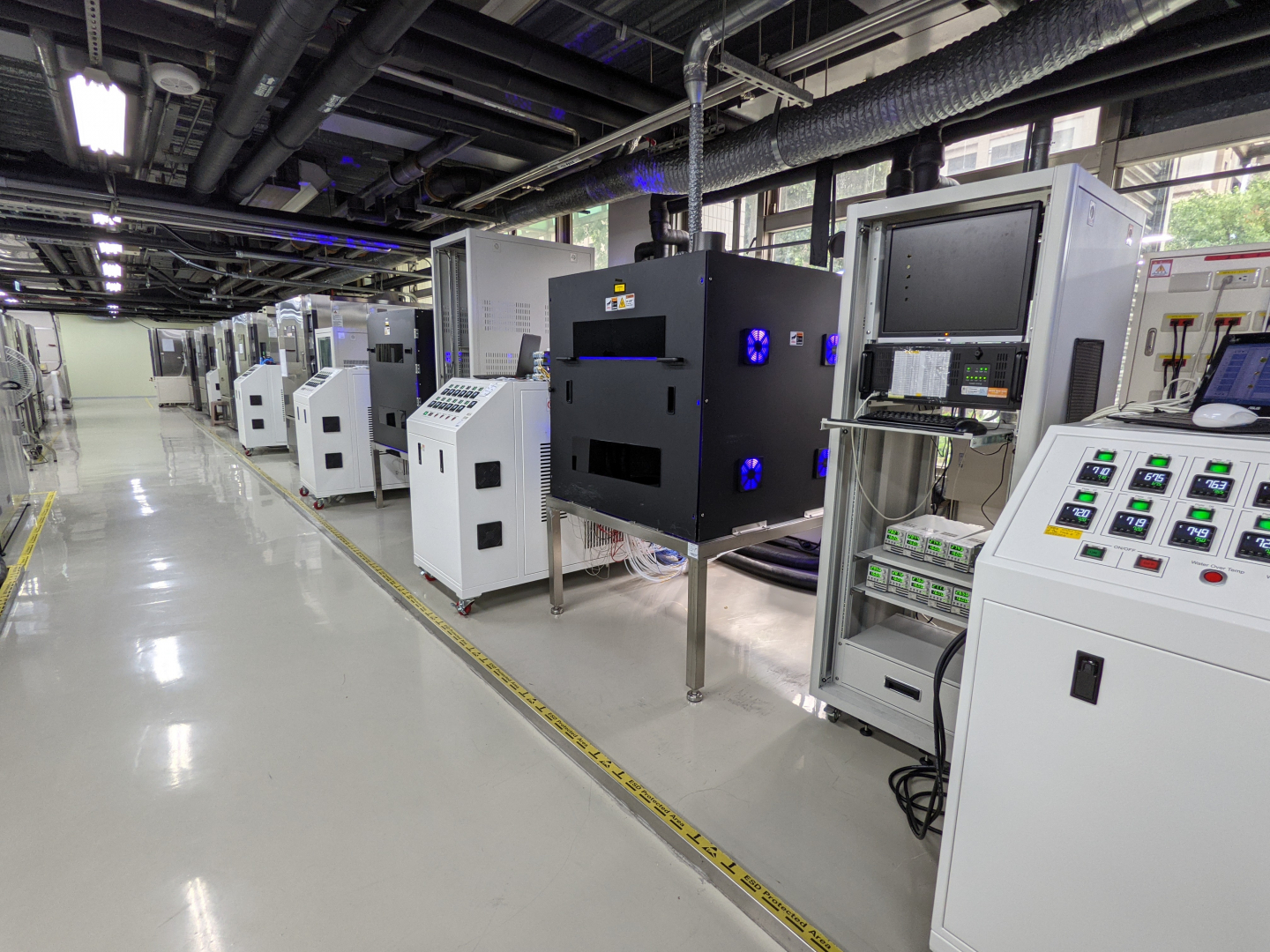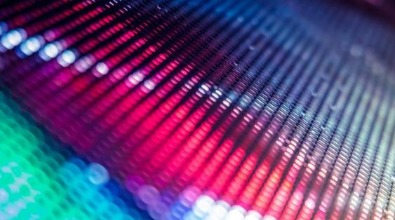Currently, major international organizations are only starting to set up generalized specifications for LED products; what we have are specifications commonly used for discrete semiconductors (such as AEC Q-101 for automobile electronics), therefore major manufacturers tend to establish their own standards for product approval or quality control. Differing from general electronic devices, the major control factor of LED is electric current and LED products are highly sensitive to ESD; heat generated by LED products is also a key factor to the lifespan.
Therefore we planned a series of verification techniques for verifying parts and modular products, providing customers with specific test categories based on different product attributes. We also provide verification consultation and total solutions including test design, durability calculation, quality improvement, etc. At the moment, we provide integral services including a temperature controllable integrating sphere system (50cm) and MCD measurements to meet specific needs of customers during the tests, improving test efficiency and precision.
Service Item
- Electrostatic Discharge (ESD) Test: LED elements have a lower ESD resistance than general ICs. Unless by adding in a Zener Diode, most manufacturers are unable to guarantee the ESD classification. However, most of them have set HBM>2KV and MM>1KV as their goals.
- Moisture sensitivity level (MSL) test: LED Automotive specifications have been required to carry out this test. However, for surface mount devices (SMD), this test helps to find out moisture resistance of the product, which may facilitate production control.
- Estimation of thermo-resistance (θth) and Tj: Due to critical heat dissipation problems, optical decay accelerates in LEDs when environment temperature is high. A better design of heat dissipation is therefore necessary. Measuring thermo-resistance may help the customer in finding an adequate heat dissipation model or selecting a more appropriate material to prolong product lifespan.
- Burn-in test: Tests are conducted through different combinations of current, temperature, and humidity conditions. We also provide verification services of DOE Energy Star LM-80.
- Lifespan estimation: Typical endurance test that calculates activation energy of the product to attain more accurate estimations of product lifespan.
- Pulse test: this is a rapid, but severe test that simulates actual use conditions. This test can be conducted with a high temperature or low temperature storing chamber, or with cycling temperature chamber. This is an accelerated simulation of extreme conditions.
- Environmental stress test: Typical stress tests include Temperature Cycling Test (TCT) and Temperature/Humidity Cycling Test. The former mainly makes use of the Coefficient of Thermal Expansion mismatch (CTE mismatch) feature of the material to reveal structural risks in the element after installation; the latter reveals quality issues of the product by its respiring effect.
- Mechanical stress tests: These tests include different modes of push/pull, vibration, shock, etc. with devices mounted onto a PCB. It requires proper planning of test conditions based on intended application and environment conditions of the product, to reveal product defects.
- Gas corrosion tests: Corrosive gas includes salty mist and acidic gas. Due to air pollution nowadays severely affecting earth environment, acidic fluids resulting from condensation of acidic gases in the air are critical influence factors to LED’s materials; in addition to rapid deterioration of the internal optical reflection, external aging effects also cause discoloration issues of the product.
- Sand/Dust and Rain(IP) tests: End products have a high demand of water and dust protection, especially in outdoor uses. Restriction tests are required to ensure products having a reliable configuration.
- Other tests: Other commonly used tests include Early Failure Screening, Solderability test, Pressure Cook Test (PCT), Heat Resistance Test, etc.
- Optical Measurement & Analysis:LED Lab equipped with 1M integrated sphere incorporated temperature-controlled platform, capable to acquire Luminous flux, radiant flux, CCT, chromaticity coordinates, wavelength...etc. Measurement result will assist client for evaluate LED quality and understand product property for future improvement.
- Regulation test: AECQ-101, AECQ-102, IEC (International Electrotechnical Commission) IEC60810, SAE (American Automotive Engineering Association) USCAR-33, LED Life Test / Estimation. Energy Star (EnergyStar) LM-80 / TM-21 test.
DEKRA iST is also a laboratory accredited by the U.S. Environmental Protection Agency (EPA) EnergyStar program and can assist you in applying for the LED LM-80 certification report.
On the other hand, considering high-power LED product application is getting more and more, such as automotive, healthcare and special application, and the design for reliability is totally different between high power and low-power products. In order to control well Max Tj of high power product, DEKRA iST developed a precisely Tj control equipment(max. 600 watt), which can accurately control the Ts and get the correct Tj to meet the requirement of high power LED reliability, and already has lots of experiments for couple of worldwide LED companies.

<Customized water-cooling system>

To make all your PROBLEMS SOLVED, we provide professional consultant and service.
For more information or service, please feel free to email to 📧 sos@dekra-ist.com




